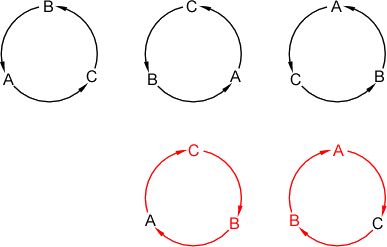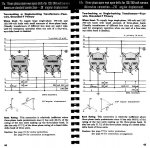This only makes sense if the feeder is 4-wire wye. The OP made no mention of a neutral.
No change to rotation will occur if line conections are simply rotated. If connected A-N-C, flopping to B-N-A, or C-N-B, will not change roatation of the motors.
One way to look at it is, because the last connection of the existing "lags" by 240?, keep the revised last connection the same "lagging" by 240?. I put lags / lagging in quotation marks because the last connection may actually lead the first, but as long as the original order ABC is maintained, rotation will be maintained regardless of the original CW or CCW rotation.
Perhaps an easier way is whatever number of connections you rotate the first connection forward or backward in the ABC cycle (i.e. ABCABCABC...) the last connection gets rotated the same number of connections. For example if rotating first connection A to B, that's rotating one connection forward or two connection back, so the last connection rotates from C to A, which is also one connection forward or two connections back.


